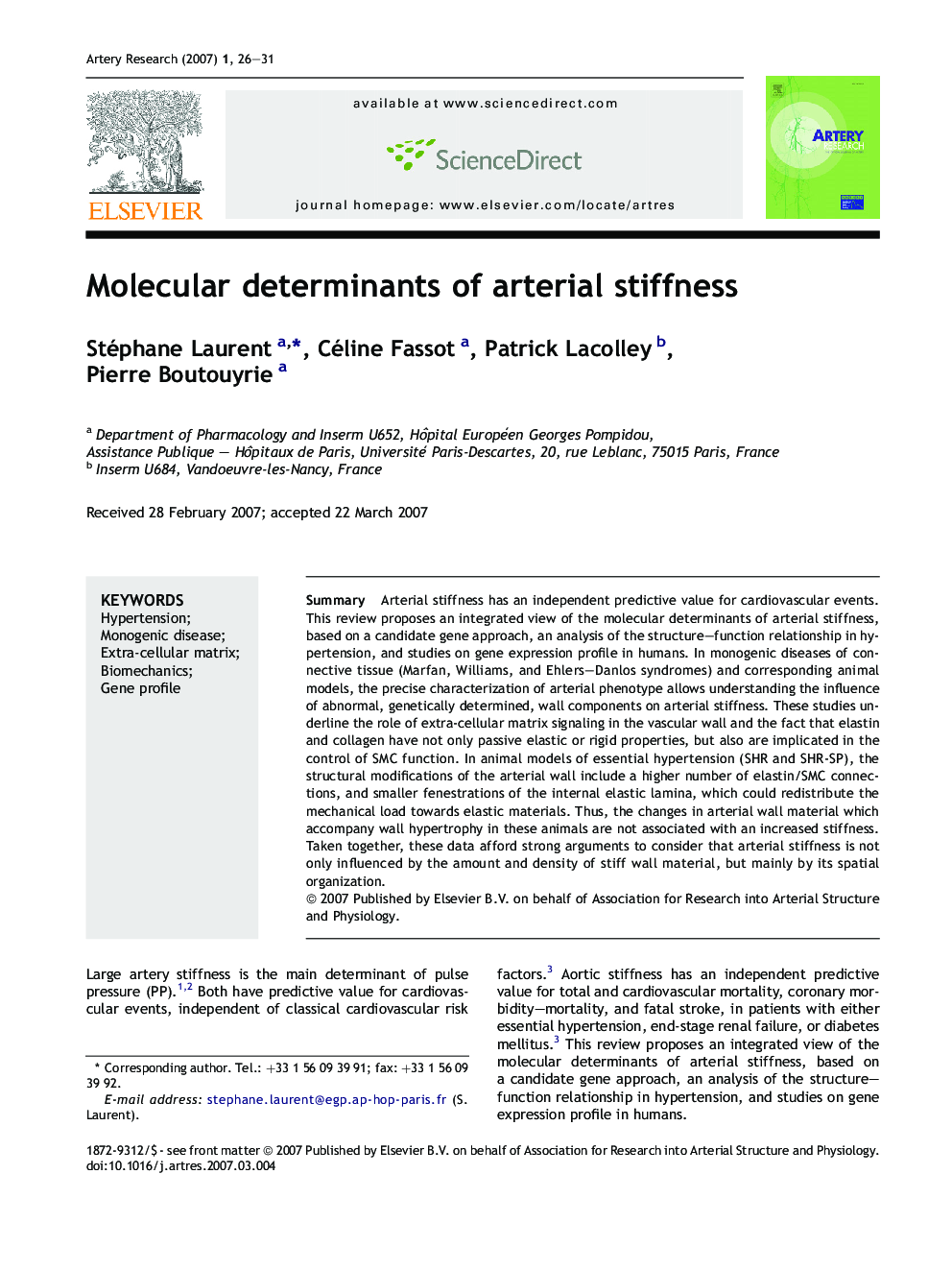| Article ID | Journal | Published Year | Pages | File Type |
|---|---|---|---|---|
| 2892530 | Artery Research | 2007 | 6 Pages |
SummaryArterial stiffness has an independent predictive value for cardiovascular events. This review proposes an integrated view of the molecular determinants of arterial stiffness, based on a candidate gene approach, an analysis of the structure–function relationship in hypertension, and studies on gene expression profile in humans. In monogenic diseases of connective tissue (Marfan, Williams, and Ehlers–Danlos syndromes) and corresponding animal models, the precise characterization of arterial phenotype allows understanding the influence of abnormal, genetically determined, wall components on arterial stiffness. These studies underline the role of extra-cellular matrix signaling in the vascular wall and the fact that elastin and collagen have not only passive elastic or rigid properties, but also are implicated in the control of SMC function. In animal models of essential hypertension (SHR and SHR-SP), the structural modifications of the arterial wall include a higher number of elastin/SMC connections, and smaller fenestrations of the internal elastic lamina, which could redistribute the mechanical load towards elastic materials. Thus, the changes in arterial wall material which accompany wall hypertrophy in these animals are not associated with an increased stiffness. Taken together, these data afford strong arguments to consider that arterial stiffness is not only influenced by the amount and density of stiff wall material, but mainly by its spatial organization.
